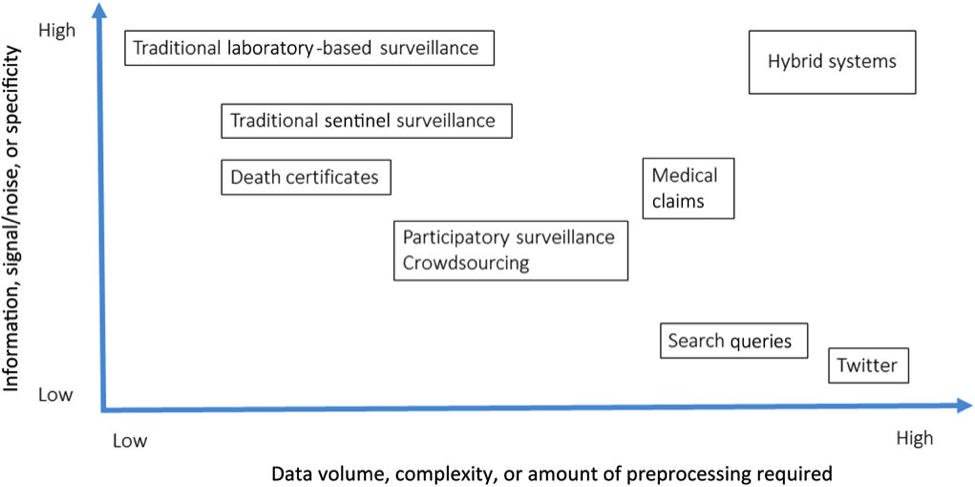The evolution of infectious disease surveillance
“We could provide timely, sensitive data on population health”

The 19th century saw the rapid development of sentinel surveillance systems which informed important health policy decisions. In the 20th century, microbiology and computer advances improved disease surveillance and public health communication. Now, in the 21st century, we have access to low cost and quick identification of pathogens. Additionally, we now use big data systems e.g. electronic medical claims which allow us to compare diseases in time and place [1].
The era of big data
We now have massive amounts of electronic data stored (notably, healthcare records and social media). Though technically challenging, if we could appropriately harness it, we could provide timely, sensitive data on population health [2]. Several infectious disease surveillance systems have been developed using this approach, such as monitoring search engine queries to infer incidence, using data from social media to understand health behaviours [3], and crowdsourcing to gather in-depth epidemiological information. Each of these novel surveillance systems has a relative merit of disease signal specificity and of volume and granularity of coverage [Figure 1].

Figure 1: Overview of the characteristics of infectious disease surveillance systems. Hybrid systems combining traditional surveillance with big data streams fall in the desirable zone associated with high information return and high data volume [1].
Influenzanet has the sensitivity to detect timely changes in population health, so may become a viable instrument for a wide variety of applications in public health preparedness and control [4]. Combining it with sentinel surveillance could allow us access to information of high specificity as well as high volume, like the hybrid systems in Figure 1. Since seasonal influenza epidemics form a rich disease system, it can be used as a model for building novel infectious disease surveillance systems such as this one.
References
- Simonsen, L.G., Julia R; Olson, Don; Viboud, Cecile, Infectious Disease Surveillance in the Big Data Era: Towards Faster and Locally Relevant Systems. The Journal of Infectious Diseases, 2016. 214: p. 380-385.
- Salathe, M.B., Linus; Bodnar, Todd J; Brewer Devon D; Brownstein John S, Digital Epidemiology. PLoS Computational Biology, 2012. 8(7).
- Salathe, M.K., Shashank, Assessing Vaccination Sentiments with Online Social Media: Implications for Infectious Disease Dynamics and Control. PLoS Computational Biology, 2011. 7(10).
- Guerrisi, C.T., Clement; Blanchon, Thierry; Hanslik, Thomas, Participatory Syndromic Surveillance of Influenza in Europe. The Journal of Infectious Diseases, 2016. 214: p. 386-392.
12 Jun 2018
